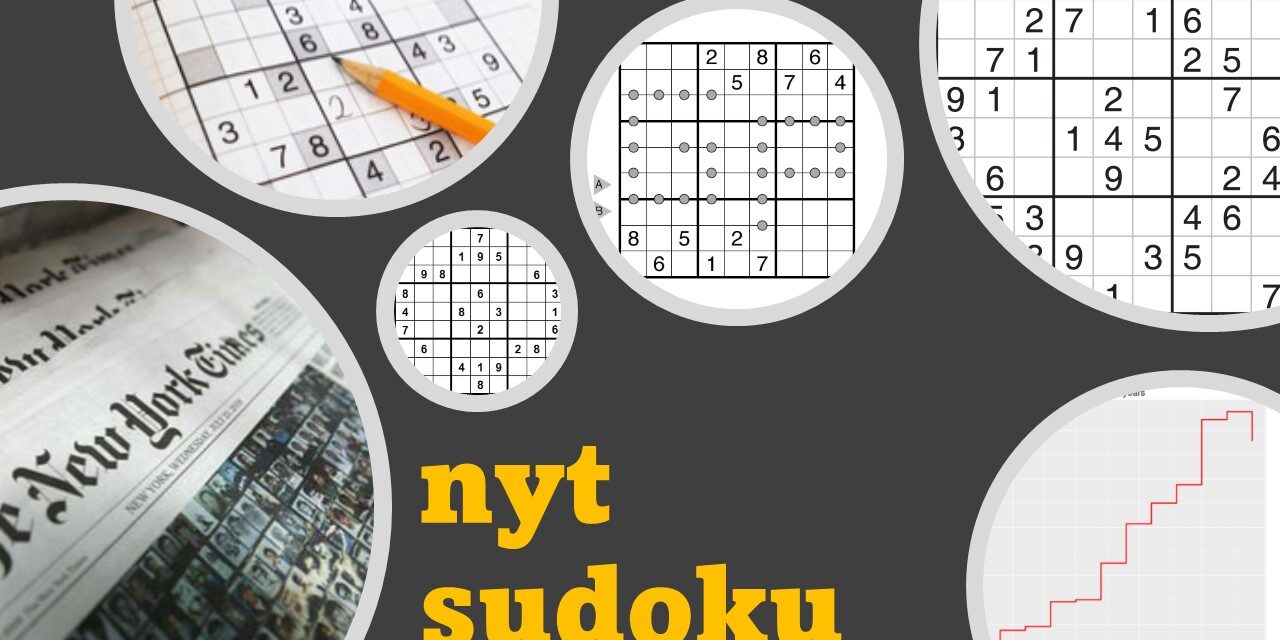Introduction
nyt sudoku Sudoku puzzles have gained significant popularity over the years, with millions of people around the world attempting to solve them daily. The New York Times (NYT) Sudoku puzzle, in particular, has become a benchmark for avid Sudoku solvers. In this article, we will explore strategies and techniques to help you crack the code and master the NYT Sudoku puzzle.
Understanding the Basics
Before diving into advanced techniques, it is essential to have a solid understanding of the basic rules of nyt sudoku . A standard Sudoku grid consists of a 9×9 square divided into nine 3×3 sub-grids. The objective is to fill each cell in the grid with a number from 1 to 9, ensuring that each row, column, and sub-grid contains all the digits exactly once.
1. Start with the Obvious
When beginning to solve a Sudoku puzzle, it is advisable to start with the cells that have only one possible solution. These are typically cells with numbers already given in the puzzle. By filling in these cells, you can eliminate possibilities and gain insights into potential placements for other numbers.
2. Use the “What If” Technique
When you find yourself stuck and unable to make further progress, the “What If” technique can come in handy. Select a cell with only two possible solutions and try placing one of the numbers. Continue solving the puzzle based on this assumption and see if it leads to a contradiction or inconsistency. If it does, you can conclude that the other number is the correct choice for that cell.
3. Apply the “Naked Singles” Strategy
The “Naked Singles” strategy involves identifying cells that only have one possible number remaining and filling them in. This technique helps narrow down possibilities and simplifies the puzzle. Keep scanning the grid for cells with only one candidate, and gradually fill them in until no more naked singles are left.
4. Utilize “Hidden Singles”
“Hidden Singles” are numbers that can only fit in a particular cell within a row, column, or sub-grid. Look for numbers that are missing within a specific unit and evaluate which cells they can potentially occupy. If you find a cell with a number that cannot fit anywhere else in the unit, it must be the correct placement for that number.
5. Employ Advanced Techniques
As you progress in your Sudoku-solving journey, you may encounter more challenging puzzles. Techniques like “Locked Candidates,” “X-Wing,” and “Swordfish” can help you crack even the most difficult puzzles. These methods involve spotting patterns and making logical deductions to eliminate possibilities and fill in the correct numbers.
Conclusion
Mastering the NYT Sudoku puzzle requires practice, patience, and a solid strategy. By starting with the obvious, using the “What If” technique, applying “Naked Singles” and “Hidden Singles” strategies, and employing advanced techniques when necessary, you can enhance your solving skills and conquer even the most complex Sudoku puzzles. So, grab a pencil and get ready to crack the code!






